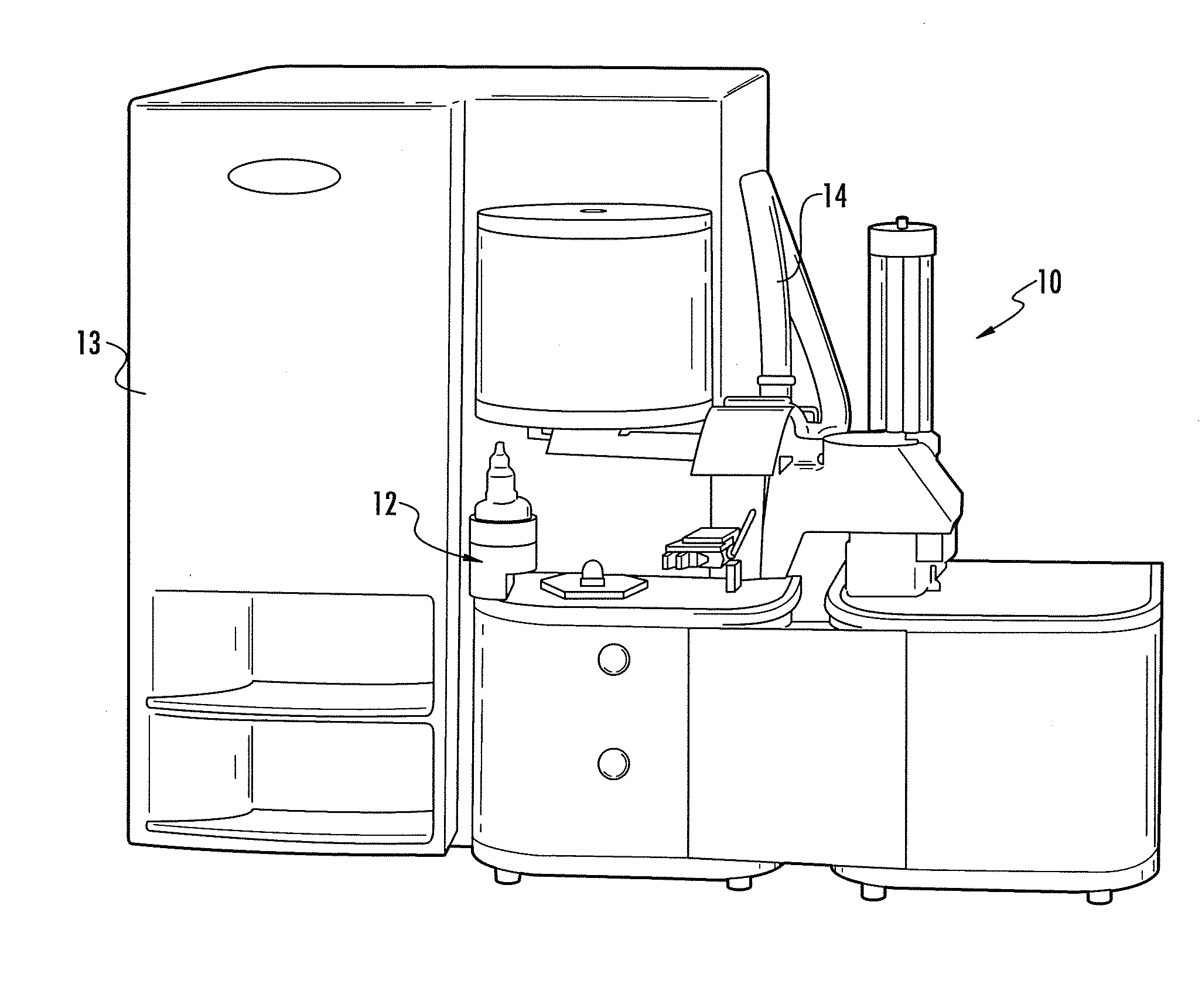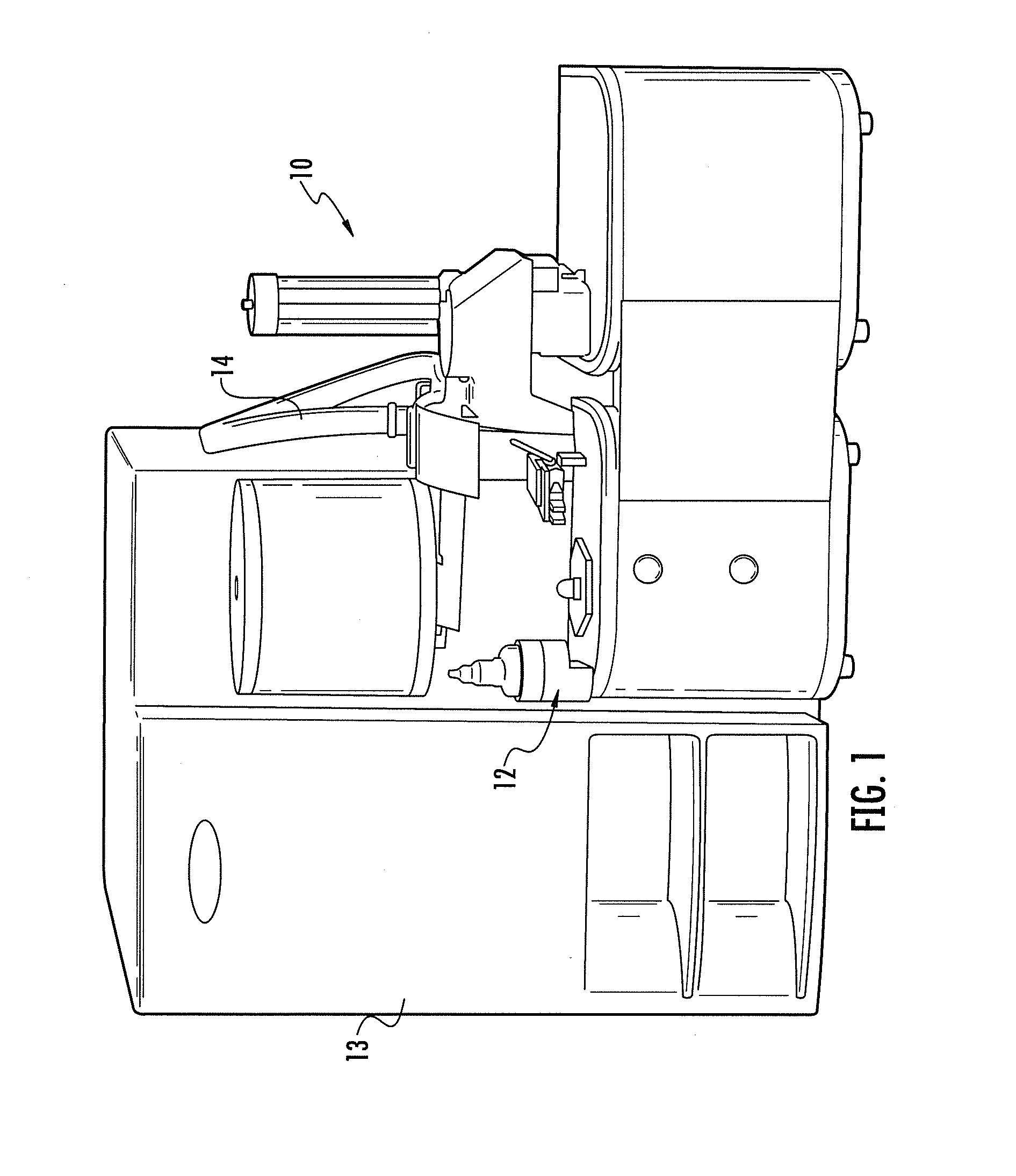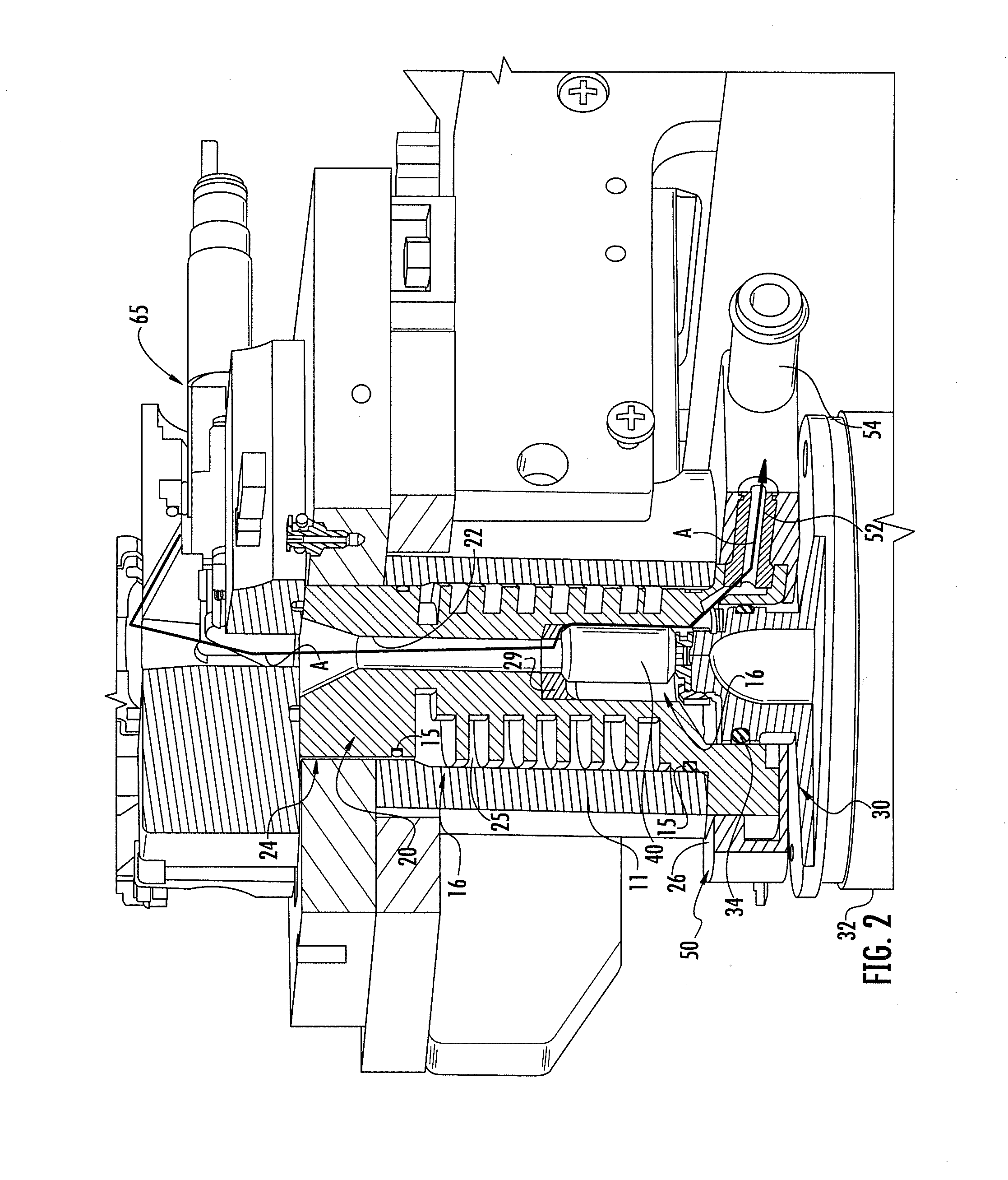Vacuum cleaning structure for electrode furnace
a vacuum cleaning and electrode furnace technology, applied in furnaces, furnace types, furnace heating elements, etc., can solve the problems of contaminated enclosed furnace chambers, dust, soot, etc., and achieve the effect of improving cleaning quality and increasing airflow turbulen
- Summary
- Abstract
- Description
- Claims
- Application Information
AI Technical Summary
Benefits of technology
Problems solved by technology
Method used
Image
Examples
Embodiment Construction
[0021]Referring initially to FIG. 1, there is shown an analytical instrument 10, such as a Model ONH836 nitrogen, oxygen, hydrogen analyzer, commercially available from Leco Corporation of St. Joseph, Mich. The instrument is designed to incorporate the present invention and includes a resistance furnace 16, as best seen in FIG. 2. The furnace includes an upper electrode 20 incorporating one aspect of the present invention and a lower electrode 30 which sealably encloses the furnace chamber within the upper electrode and engages a graphite crucible 40 positioned between the upper and lower electrodes. A suitable power supply is conventionally coupled to the upper and lower electrodes to pass sufficient current through crucible 40 to heat a sample specimen contained therein to a temperature of 2500° C. or higher to release analyte gases from the sample. As is well known, a supply of inert carrier gas, such as helium, flows downwardly through the central opening 22 of upper electrode 2...
PUM
 Login to View More
Login to View More Abstract
Description
Claims
Application Information
 Login to View More
Login to View More - R&D
- Intellectual Property
- Life Sciences
- Materials
- Tech Scout
- Unparalleled Data Quality
- Higher Quality Content
- 60% Fewer Hallucinations
Browse by: Latest US Patents, China's latest patents, Technical Efficacy Thesaurus, Application Domain, Technology Topic, Popular Technical Reports.
© 2025 PatSnap. All rights reserved.Legal|Privacy policy|Modern Slavery Act Transparency Statement|Sitemap|About US| Contact US: help@patsnap.com



